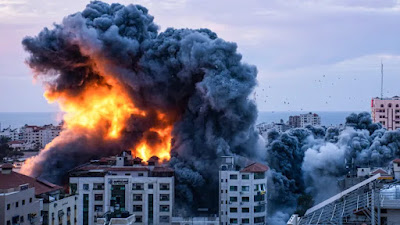Gaza and its Resistance to Israels Brutal Attacks
Gaza and its Resistance to Israels Brutal Attacks
The ongoing conflict in the Middle East has been a topic of global concern and debate for decades, with the Israeli-Palestinian conflict at the forefront. One of the most challenging and tumultuous regions in this conflict is Gaza, a small strip of land on the eastern coast of the Mediterranean Sea. Gaza has experienced numerous cycles of violence, characterized by Israel's brutal attacks and the resilient resistance from the Palestinian population.
This article aims to delve into the complexities of Gaza's resistance to Israel's brutal attacks, providing an in-depth exploration of the historical context, the challenges faced by the people of Gaza, the strategies employed by Palestinian factions, and the impact on the region and international relations. As we embark on this journey through the heart of this conflict, we will gain a deeper understanding of the dynamics at play and the human stories behind the headlines.
Historical Context
The roots of the conflict between Gaza and Israel date back to the mid-20th century, when the State of Israel was established in 1948. The creation of Israel led to the displacement of hundreds of thousands of Palestinians, many of whom found themselves in Gaza. Over time, Gaza became a refuge for Palestinians who had lost their homes and a focal point for resistance against the Israeli state. The region's historical context is essential for understanding the deep-seated tensions that persist today.
Gaza's history is marked by a series of wars, displacements, and occupations. The 1967 Six-Day War resulted in Israel's occupation of Gaza, along with the West Bank and East Jerusalem. The occupation lasted until 2005 when Israel unilaterally withdrew its settlers and soldiers from Gaza, leading to the establishment of the Palestinian Authority in the West Bank and the rise of Hamas in Gaza.
Hamas, a Palestinian political and military organization, has played a central role in the resistance against Israel. Initially formed as a charitable organization, Hamas later evolved into a political and military entity with the goal of liberating Palestinian territories. This transformation marked a turning point in the conflict, with Hamas using both political and military means to resist Israeli control.
Despite international efforts to broker peace between Israel and the Palestinians, the situation in Gaza has remained tense and precarious. The historical context reveals the deep-seated grievances and aspirations of the Palestinian population, which continue to fuel their resistance to Israel's actions.




http-ultimateshop.com login cc shop
ReplyDelete